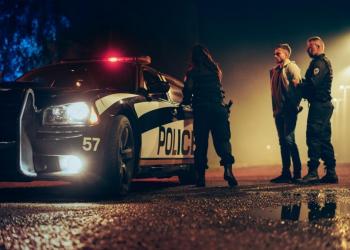
Case Alert: Be Careful, This New State Supreme Court Decision May Change How You Do Your Job Today
A person’s apparent attempt to avoid being contacted by the police while in a high-crime area at night is insufficient, by itself, to justify a detention.
Two uniformed Los Angeles Police Department officers were patrolling in a “known narcotics area” and “gang hangout” at about 10 p.m. in a marked patrol car. They drove into a cul-de-sac that was known as a “gang haunt” and where fresh graffiti was a daily occurrence. One of the officers had made a drug-related arrest at that location the night before. As the officers entered the cul-de-sac, they observed an individual, later identified as defendant Marlon Flores, standing at the end of the street next to an illegally parked car.
Flores looked in the officers’ direction, walked to the opposite rear side of the car and crouched down out of sight. In the sequence of events, as recorded by one of the officer’s body camera and described in his testimony later, the officers remained in their car for about 45 seconds as they shined their vehicle’s spotlight on the area where they’d seen Flores.
Flores briefly stood up, but then bent down again behind the car. The officers then exited their car, with the first officer approaching Flores with his flashlight directed at him. At the same time, the second officer walked around the front of the parked car and approached Flores from the opposite side. The body cam shows that Flores looked up about four seconds later in the first officer’s direction.
Flores later said he was tying one of his shoes. As the first officer approached Flores while shining his flashlight at him, Flores was twice told to stand up. Both commands were ignored as defendant continued to “toy” with his right foot for about 20 seconds. The officer later testified that he believed Flores was merely pretending to tie his shoe while actually attempting to hide drugs from view and “that he was there loitering for the use or sales of narcotics.”
Flores stood up upon the officer’s third command and was told to put his hands behind his head and he was handcuffed. While patting down Flores for weapons, the officer inadvertently set off an electronic car key in Flores’ pocket, which activated the lights on the parked car. Looking into the car through a window, the officer could see in plain sight a methamphetamine bong.
Upon receiving permission to retrieve Flores’ identification from the vehicle, officers also found methamphetamine and a loaded unregistered pistol. Charged in state court with drug and illegal-firearm offenses, Flores’ motion to suppress the items recovered from his car was denied. He therefore pleaded “no contest” to carrying a loaded, unregistered handgun (Pen. Code § 25850(a)) and received probation.
He appealed. The Second District Court of Appeal (Div. 8), in a 2-to-1 decision, upheld the Flores’ detention as lawfully based upon a reasonable suspicion. (See People v. Flores (Feb. 16, 2021) 60 Cal. App. 5th 978, as briefed on LegalUpdates.com, Vol. 26, #3, March 6, 2021.) Flores appealed to the California Supreme Court.





